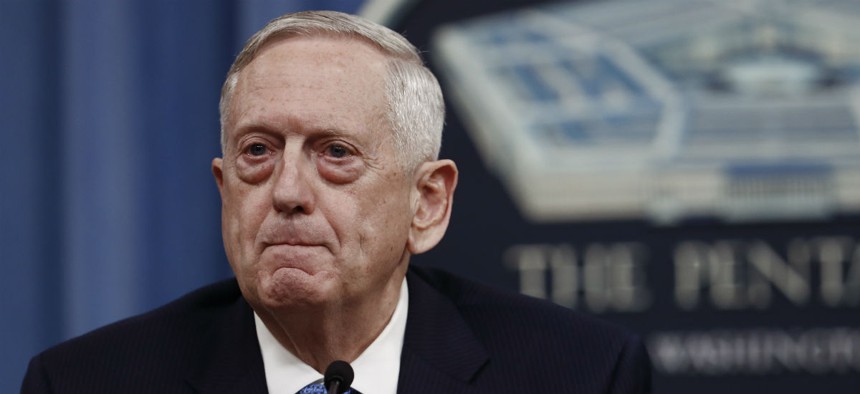Defense Ends Civilian Hiring Freeze, But Will Review 'Necessity' of Vacant Positions
Mattis sent a memorandum to department leadership Wednesday.
The Defense Department has lifted its hiring freeze, several weeks after President Trump ended the moratorium across government, but the Pentagon is still taking a cautious approach to bringing in new employees as it prepares to reshape its operations.
Defense Secretary James Mattis sent the memorandum to the department Wednesday, which will immediately allow hiring to commence. Mattis called on leadership to focus on the “necessity and prudence” of recruitment and hiring actions going forward. The department spelled out a broad swath of exemptions in February guidance explaining the freeze, with specific vacancies requiring approval from service secretaries and other top Pentagon officials before they could be filled.
Broadly speaking, the guidance created five different categories of potential exemptions: positions necessary to meet national security or public safety responsibilities, those determined additionally necessary by the aforementioned officials, exemptions required by law, exemptions that do not require approval and those that require advanced coordination with department leadership.
Wednesday’s memo renders that guidance moot, though Mattis instructed his top lieutenants to “scrutinize carefully” vacant positions and to “recruit or hire only when” it aligns with Office of Management and Budget guidance instructing agencies to come up with a plan to reduce the size of their workforces. Mattis specifically called on his components to assess whether vacant positions “reflect your current and projected mission needs,” if the position can be reassigned to “lower organizational levels” or shifted to a lower grade, and what “appropriate changes” to the position can be made in a timely manner.
In conjunction with requirements of the 2017 Defense authorization act, Mattis said hiring actions at certain Defense activities should be assessed “in light of potential organizational and mission uncertainties.” He also directed components to first attempt to fill Senior Executive Service positions internally before opening them to individuals not currently part of the department’s SES corps.
The secretary instructed agencies to “maximize the use of” term and temporary employees.
“The department will honor both the letter and spirit of the president's and OMB's direction, mindful of our significant national security mission and public safety responsibilities,” said Johnny Michael, a Defense spokesman. “DoD civilians are an integral part of our national military strategy, serving as operators in areas such as intelligence, cyber, security assistance and stability operations.”
Michael added the department would avoid depending on “borrowed military manpower” and that restrictions on the use of contracted services outside of “established organizational baselines” remain in effect.
The Pentagon came under fire for its slow pace in approving hiring freeze exemptions while the moratorium was in place; while guidance exempted services provided to the children of active duty military personnel, multiple bases reported having to suspend their child care programs because they could not onboard new staff. Military spouses reported having to make decisions of whether to move with their families when the active duty member was reassigned or stay behind to keep their jobs.
Still, some hiring took place. The Army issued 12,000 exemptions as of early March, while the Air Force carved out 54,000 positions that could be filled.
While Trump has called on all federal agencies to come up with ways to reform themselves, the White House -- including OMB Director Mick Mulvaney -- has repeatedly cited Defense as an example of an area of federal government that might ultimately grow. The president has proposed increasing Defense spending by $54 billion in fiscal 2018.








